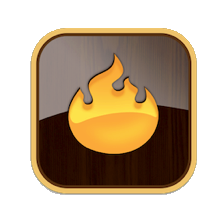Color
Any one of the following:
- Hexadecimal. A colour represented as #RRGGBB; a hash sign followed by 6 hexadecimal digits, a pair for the intensity level 0 to 250 in hexadecimal of Red, Green and Blue. This is the same format used for describing colours in HTML. Example:
#A482BF. The short form is also accepted, e.g. #f00 for #ff0000, where the two hex characters of each per-colour value are identical and the second character is omitted. Bare hex strings in action code, i.e. unquoted numbers preceded by a hash sign, are correctly identified as hex input values - Named Colours. The name of a colour that either comes pre-defined in Tinderbox, or which you have defined for this Tinderbox document using the Colors pane of the attribute palette. Examples: blue, red, minty-fresh-green. When setting a shade of a named colour in a string the shade value (lighter, darkest, etc.) comes before the colour, unlike listings in Info view and the Inspectors; thus "dark warm gray" not "warm gray dark", "light cyan" not "cyan light".
- HSV (Hue-Saturation-Value) value. Hue: a value from 0 to 360 degrees. Saturation and Value: a value from 0 to 100 percent. Enclosed in parentheses and preceded by 'hsv'. Examples:
"hsv(0,100,50)","hsv(240,80,80)". - RGB (Red-Green-Blue). Intensity levels represented as integers from 0 to 250. Enclosed in parentheses and preceded by 'rgb'. Examples:
"rgb(0,0,0)"and"rgb(68,153,68)". This should not be confused with the rgb() action operator (which sets a hex format value string (see first bullet above).
When displayed in a note's displayed attributes table, Color-type attributes show a colour-chip icon before the attribute value. Pressing the icon opens an OS colour picker dialog.
If no default value is specified, a Color type defaults to an empty string (which is treated by Tinderbox as the value 'normal'); in Displayed Attributes table displays a white colour chip is displayed. In some cases, Tinderbox will show a dark red colour as a 'not initialised' colour value; it is hex colour code #6f0000, though its derivation as a value is not clear.
Note that as 8-bit colour settings are translated within the app into 16-bit colours, rounding errors can occur. So, in some cases—most likely using HSV and HSV based transforms—the values used might not correspond precisely to those set by the user.
Similarly, using format() with a colour attribute will always result in a hexadecimal value string regardless of the stored value. Thus it makes sense to export colour attributes as ^value(format($ColorAttr))^ or ^value($ColorAttr.format())^. However, note that coercing a default (blank) colour to a string value using format() or .format() will result in the colour value "#ffffff", which is not strictly the blank value. So, be wary of using that formatting as a means to check for a blank colour value; better is to use a short form Boolean test.
Use in Export code
When accessed via ^value()^ export code, it will return either a hex colour value or a named Tinderbox colour, depending on what is set for the destination attribute.
Legacy only: using the deprecated ^get()^ or ^getFor()^ export codes, the colour is always returned as a hex figure including a # prefix, e.g. "#FF9900".
Default/Empty value
An empty string.
Sorting order
Named colours in decreasing lexical sort order, then #-based codes in decreasing lexical sort order with same valued three-character codes sorting after six-character ones (i.e. #ffffff before #fff).
Color-type System Attributes
Built-in attributes of the Color data type are listed below:
- $AccentColor
- $BorderColor
- $CaptionColor
- $Color
- $Color2
- $GridColor
- $HoverBackgroundColor
- $MapBackgroundAccentColor
- $MapBackgroundColor
- $MapBackgroundColor2
- $MapBodyTextColor
- $MapPrototypeColor
- $MyColor
- $NameColor
- $OutlineBackgroundColor
- $PlotBackgroundColor
- $PlotColor
- $PrototypeHighlightColor
- $ShadowColor
- $StripeColor
- $SubtitleColor
- $TextBackgroundColor
- $TextColor
- $TextColorBlue
- $TextColorGray
- $TextColorGreen
- $TextColorRed
- $TextHighlightBlue
- $TextHighlightGreen
- $TextHighlightMagenta
- $TextHighlightRed
- $TextHighlightYellow
- $TimelineBandLabelColor
- $TimelineColor
- $TimelineGridColor
- $TimelineScaleColor
- $TimelineScaleColor2
- $TitleBackgroundColor
- $TitleForegroundColor
